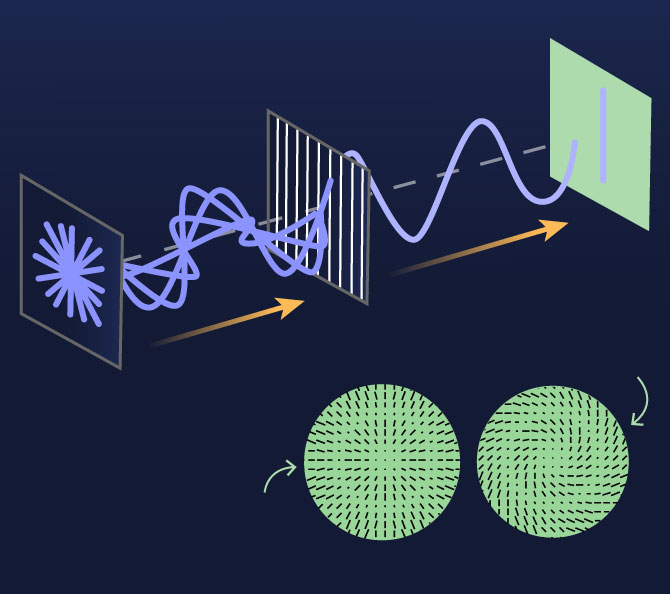The universe burst into existence 13.8 billion years ago. What happened in that earliest moment is of intense interest to anyone trying to understand why everything is the way it is today.
“I think this question of what happens at the beginning of the universe is a profound one,” said David Spergel, president of the Simons Foundation, a nonprofit organization that supports research at the frontiers of mathematics and science. “And what is remarkably exciting to me is the fact that we can do observations that can give us insight into this.”
A new $110 million observatory in the high desert of northern Chile, $90 million financed by the foundation, could uncover key clues about what happened after the Big Bang by looking at particles of light that have traveled across the universe since almost the beginning of time.
The data could finally provide compelling corroboration for a fantastical idea known as cosmic inflation. It holds that in the first sliver of time after the universe’s birth, the fabric of space-time accelerated outward to speeds far faster than the speed of light.
Alternatively, the observatory’s measurements could undercut this hypothesis, a pillar in the current understanding of cosmology.
The observatory is named after the foundation and its founders: Jim Simons, the hedge fund billionaire and philanthropist who died on May 10, and his wife, Marilyn, a trained economist. Two of the four telescopes began taking measurements in April, in time for Dr. Simons’s 86th birthday on April 25.
Traces of Ancient Light
An illustration shows how light from the early universe might have been polarized by the push and pull of gravitational waves as the universe expanded. The Simons Observatory will search for evidence of this polarization.
#g-simons-box ,
#g-simons-box .g-artboard {
margin:0 auto;
}
#g-simons-box p {
margin:0;
}
#g-simons-box .g-aiAbs {
position:absolute;
}
#g-simons-box .g-aiImg {
position:absolute;
top:0;
display:block;
width:100% !important;
}
#g-simons-box .g-aiSymbol {
position: absolute;
box-sizing: border-box;
}
#g-simons-box .g-aiPointText p { white-space: nowrap; }
#g-simons-600 {
position:relative;
overflow:hidden;
}
#g-simons-600 p {
font-family:nyt-franklin,arial,helvetica,sans-serif;
font-weight:300;
line-height:18px;
height:auto;
opacity:1;
letter-spacing:0em;
font-size:16px;
text-align:left;
color:rgb(173,219,173);
top:1.3px;
position:static;
text-transform:none;
padding-bottom:0;
padding-top:0;
mix-blend-mode:normal;
font-style:normal;
}
#g-simons-600 .g-pstyle0 {
height:18px;
text-align:center;
color:rgb(255,255,255);
position:relative;
}
#g-simons-600 .g-pstyle1 {
height:18px;
text-align:center;
color:rgb(174,179,255);
position:relative;
}
#g-simons-600 .g-pstyle2 {
height:18px;
text-align:center;
color:rgb(139,147,255);
position:relative;
}
#g-simons-600 .g-pstyle3 {
height:18px;
text-align:center;
position:relative;
}
#g-simons-335 {
position:relative;
overflow:hidden;
}
#g-simons-335 p {
font-family:nyt-franklin,arial,helvetica,sans-serif;
font-weight:300;
line-height:15px;
height:auto;
opacity:1;
letter-spacing:0em;
font-size:13px;
text-align:left;
color:rgb(173,219,173);
top:1px;
position:static;
text-transform:none;
padding-bottom:0;
padding-top:0;
mix-blend-mode:normal;
font-style:normal;
}
#g-simons-335 .g-pstyle0 {
height:15px;
text-align:center;
color:rgb(255,255,255);
position:relative;
}
#g-simons-335 .g-pstyle1 {
height:15px;
text-align:center;
color:rgb(174,179,255);
position:relative;
}
#g-simons-335 .g-pstyle2 {
height:15px;
text-align:center;
color:rgb(139,147,255);
position:relative;
}
#g-simons-335 .g-pstyle3 {
height:15px;
text-align:center;
position:relative;
}
Polarizing influence
(gravitational waves)
Polarized
light
Unpolarized
light
Polarization pattern caused
by gravitational waves
Normal polarization pattern
(no gravitational waves)

Polarizing influence
(gravitational waves)
Polarized
light
Unpolarized
light
Polarization pattern caused
by gravitational waves
Normal polarization pattern
(no gravitational waves)
